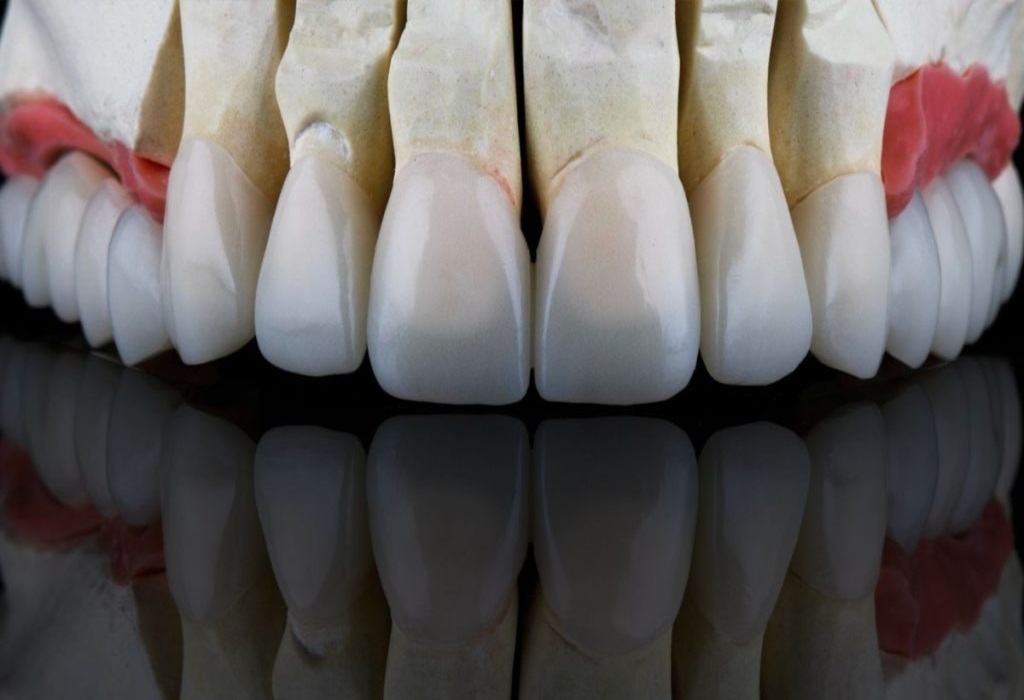
Porcelain vs Composite Veneers: Which One Should You Choose?
If you’ve been thinking about giving your smile a makeover, you might be wondering: Porcelain or composite veneers… which one is right for me? It can be a little confusing to figure out which option is best. But don’t worry, we’re here to help! In this blog, we’ll break down the differences between porcelain and composite veneers both of which are part of our dental veneer procedure in Dubai so you can choose the best option for your smile. By the end of this article, you’ll have a clear understanding of what each type of veneer offers and feel confident about which one is the right fit for you. Whether you want to fix a chipped tooth, brighten your smile, or completely transform your look, we’re here to guide you toward the best solution.
Porcelain Veneers
What Are They?
Porcelain veneers are thin shells made from medical-grade ceramic that are custom-crafted in a dental lab to fit over the front surface of your teeth. They are known for their durability, natural translucency, and high resistance to staining — making them a long-term solution for a flawless smile.
Porcelain mimics the way light reflects off real enamel, creating a highly realistic and natural-looking appearance. These veneers typically last 10–15 years or more with proper care.
Suitable For
Porcelain veneers are best for individuals who:
- Want to cover deep stains that don’t respond to whitening
- Need to correct moderate cosmetic issues like worn or misaligned teeth
- Are seeking a long-lasting solution with minimal maintenance
- Prefer a more natural and translucent look
- Are willing to invest in a multi-step, custom-crafted treatment
Procedure
The porcelain veneer process usually involves 2–3 appointments:
- Consultation & Smile Preview: Your dentist will examine your teeth, take impressions or digital scans, and discuss your smile goals. A mock-up may be created so you can preview the results.
- Tooth Preparation: A very thin layer of enamel (usually less than 0.5mm) is gently removed to make room for the veneer.
- Temporary Veneers: While your custom veneers are being fabricated in the lab, temporary ones may be placed to protect your teeth.
- Bonding the Final Veneers: On your final visit, the dentist removes the temporaries and bonds your new veneers using a special adhesive and light-curing process.
Composite Veneers
What Are They?
Composite veneers are made of a tooth-colored resin material that is directly applied and sculpted on your teeth. They are an affordable and minimally invasive solution for enhancing your smile. Since the material is shaped directly onto your teeth, the process is quick and doesn’t usually require enamel removal.
While composite veneers are more prone to staining over time (especially if you consume coffee, tea, or smoke), they can still offer a significant aesthetic improvement.
Suitable For
Composite veneers are ideal for individuals who:
- Are looking for a cost-effective smile enhancement
- Want to fix minor cosmetic flaws like small chips, uneven edges, or gaps
- Prefer a non-permanent option that can be replaced or upgraded
- Want quick results in a single visit
May consider switching to porcelain veneers later (yes, this is possible)
Procedure
The procedure for composite veneers is usually completed in a single appointment. Here’s how it works:
- Surface Preparation: The dentist lightly etches or abrades the surface of your teeth to ensure the resin material adheres properly.
- Application of Bonding Agent: A bonding agent is applied to strengthen the connection between your natural tooth and the resin.
- Shaping the Resin: The dentist layers the composite material and sculpts it directly onto your teeth to match your desired shape and size.
- Hardening: A special light is used to cure (harden) the material in place.
- Polishing: Finally, the surface is polished to give it a smooth, natural-looking finish.
Conclusion
Both composite and porcelain veneers offer effective solutions for enhancing your smile, each with its own advantages in terms of appearance, durability, cost, and treatment time. Composite veneers are more budget-friendly and quicker to apply, while porcelain veneers provide a longer-lasting, stain-resistant, and highly natural-looking finish. No matter which option you choose, proper preparation and aftercare are crucial for long-lasting results. It’s always helpful to know how to get the best results from dental veneers. By understanding the differences in materials, procedures, and suitability, you’ll be better prepared to make an informed decision with the guidance of your cosmetic dentist.
